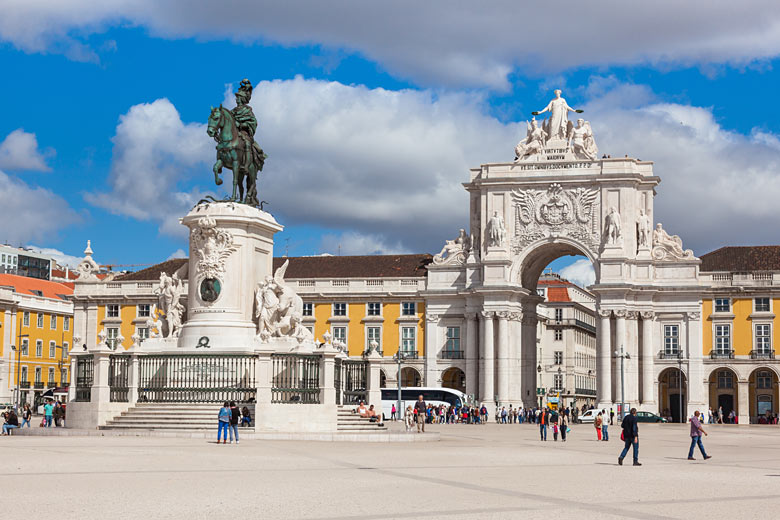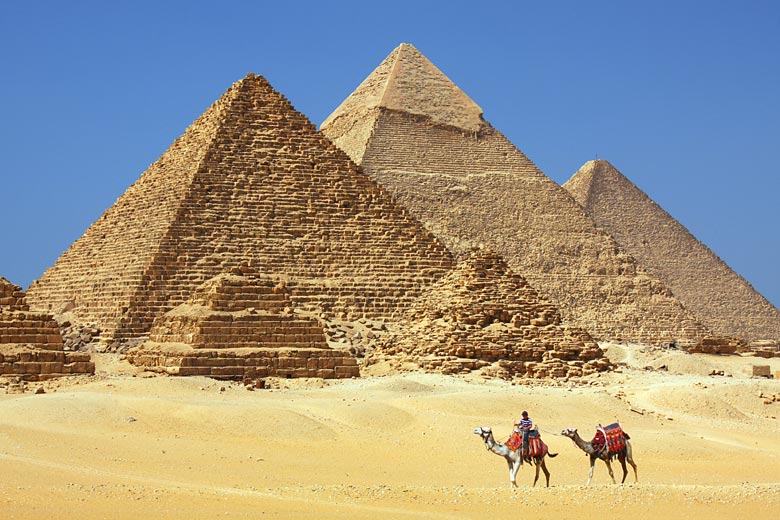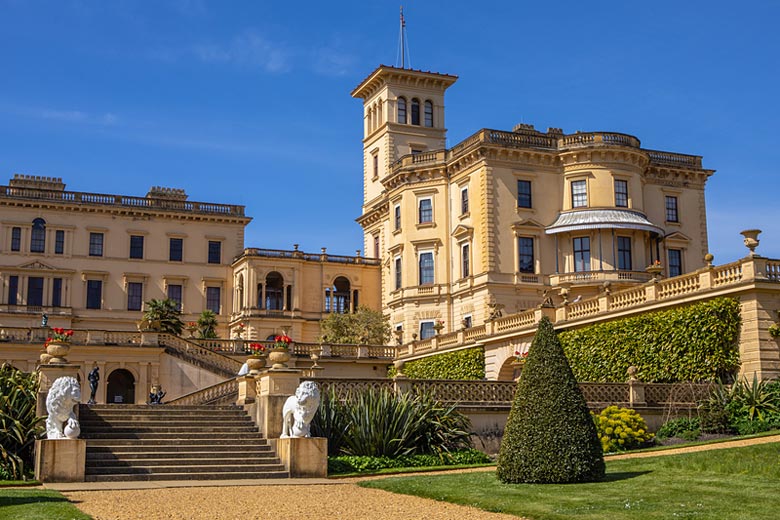Why you should take a River Nile cruise in Egypt
Egypt is the classic textbook definition of a historical treasure trove, home to the Pyramids of Giza, the tomb of Tutankhamun and towering temples dedicated to long-lost gods.
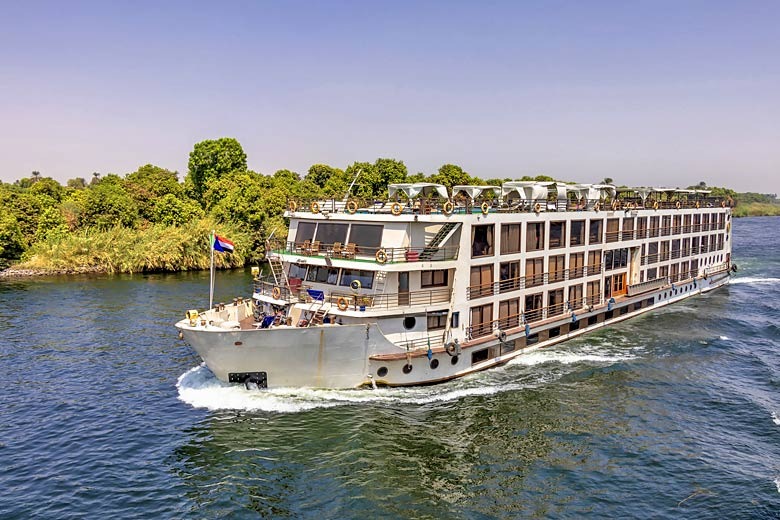
The River Nile was a lifeline for the ancient Egyptians who built their most epic tombs and temples near the water. Today, taking a Nile cruise* is the best way for travellers to reach these ancient monuments, riding on the river just like the pharaohs did.
Booking a Nile cruise: browse the latest offers on brand new for 2024 River Nile itineraries with TUI River Cruises*.
Types of Nile cruise boats
Cruising on the Nile isn't a one-size-fits-all adventure. Boats come in three types that suit different kinds of travellers and budgets. Large Nile cruisers are the standard offering, and these big boats can take up to 150 passengers. They travel between Luxor and Aswan in both directions.
Smaller dahabiyas promise a more intimate experience and carry no more than 15 passengers. They are made of wood and have double lateen sails, travelling upriver from Luxor to Aswan by wind (though occasionally by tugboat when the breeze isn't strong enough).
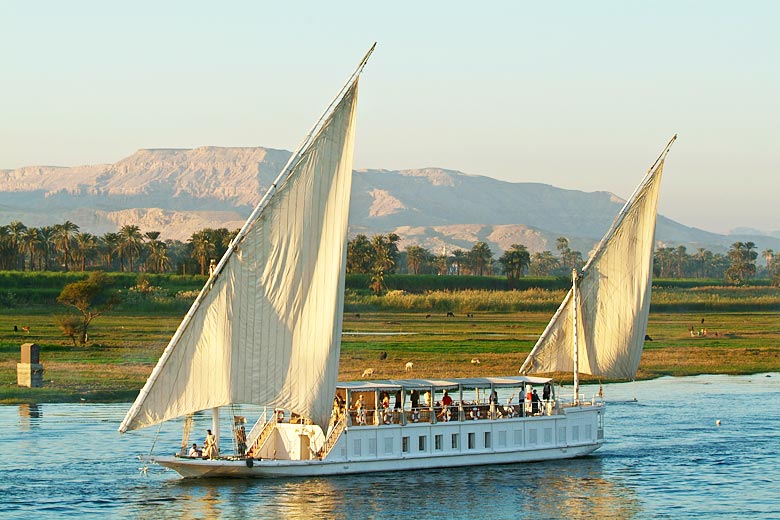
Dahabiyas are more expensive than large Nile cruisers because they have fewer people on board, but they stop in smaller towns, islands and rural areas that large Nile cruisers pass by.
The tiniest of the trio are feluccas, traditional sailboats that hold just a handful of people. Feluccas do not have motors or tugboat assistance, so journeys are entirely in the hands of Mother Nature.
Staying overnight (or several nights, depending on the wind) between Aswan and Kom Ombo on a felucca is a back-to-basics experience similar to camping, though many travellers opt for a day trip around Aswan's Nile islands instead; it's a scenic way to reach spots like the Tombs of the Nobles and the Aswan Botanical Garden.
Luxor
Dubbed the world's largest open-air museum, Luxor has the lion's share of Egypt's archaeological wonders.
The east bank of the Nile was seen as the city of the living by the ancient Egyptians because this land was the first touched by the rising sun, and this side of the river contains two magnificent temples connected by the Avenue of Sphinxes.

Karnak is one of the largest religious complexes in the world and was added to, revamped and used for more than a millennium; the ancient kingdom's most important worship space in its capital of Thebes.
The 2.7 km-long Avenue of Sphinxes, unveiled only in 2021 after more than seven decades of excavation work, is lined with statues and leads to Luxor Temple, a smaller structure that was likely used for coronations and festivals.
The ancient Egyptians considered the west bank of the Nile, the land of the setting sun, the city of the dead, and entombed many of their most important pharaohs here.
The nondescript entrances to the tombs in the Valley of the Kings don't give any hint of the splendour inside, such as the vividly painted hieroglyphs that line the walls and the huge chiselled sarcophagi.
Esna
The Temple of Khnum in Esna is much smaller than those in Luxor, but it's one of Egypt's most beautiful. It's fronted by rows of columns, which continue inside the structure, and each of the capitals is carved and painted with different plants, including lotus leaves and palm fronds.
The wall reliefs and paintings have been undergoing restoration for years, revealing the bright colours and gorgeous designs that had been hidden below layers of dust and grime; look for the darkened panel on the ceiling that shows just how dingy it was before work began.
Esna has a small dock, so you must take a dahabiya (or an overland day trip from Luxor) to visit Esna. Large Nile cruisers do not stop here.
Edfu
The mighty Temple of Horus at Edfu is one of the most atmospheric in Egypt. Visitors are greeted by 37-metre-high pylons with carved battle scenes of Ptolemy XII vanquishing his enemies in front of falcon-headed Horus.
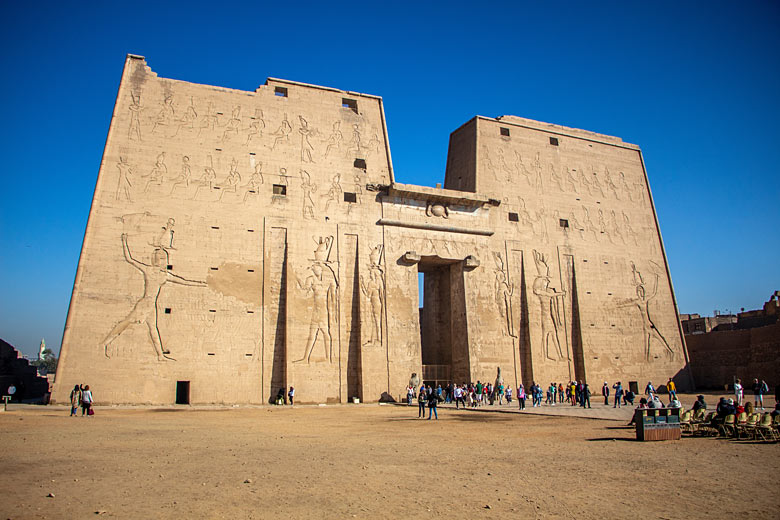
It's one of the few historic temples that still has its roof, so the cavernous passageways are spooky and dark. You can almost imagine the high priests wandering the corridors, especially around the sanctuary, which still contains its a granite shrine. You'll reach this temple by taking a short horse-drawn carriage ride from the river dock.
Kom Ombo
The curious 'double' temple at Kom Ombo is dedicated to two gods instead of one. Sanctuaries, halls, courts and storage rooms come in duplicate, with the south half of the temple dedicated to the crocodile-headed god Sobek and the northern part to the falcon god Haroeris (Horus the Elder).
Hundreds of crocodile mummies left as offerings to Sobek have been unearthed, and a dozen or so are on display at the on-site Crocodile Museum.
Aswan
The southernmost point of a Nile cruise is the laid-back town of Aswan, and the sightseeing doesn't stop here. Aswan is the jumping-off point for a visit to the mountain-carved temples of Abu Simbel, further south near the border with Sudan and reachable by plane, bus or a several-day cruise on Lake Nasser.

The Great Temple of Ramses II is a traveller favourite for its beautiful lakeside setting and its grand entrance with four colossal statues of its namesake pharaoh. Ramses II built the smaller nearby temple for his most beloved wife, Nefertari.
Closer to Aswan, Philae Temple is beautifully set on a palm-studded island and was a common muse for Victorian-era European painters.
If Aswan is the end of your time on the water, toast your trip at the famous Old Cataract Hotel, where Agatha Christie wrote Death on the Nile.
Long Nile cruises from Cairo
While most travellers cruise the Nile between Luxor and Aswan, it's also possible to take the long route and go between Cairo and Aswan.
Long Nile cruises typically last 15 days, and because travellers often choose the shorter option in southern Egypt, long Nile cruises have infrequent departures, usually just once a month, as opposed to multiple daily departures between Luxor and Aswan.
Climate in Egypt
| Jan | Feb | Mar | Apr | May | Jun | Jul | Aug | Sep | Oct | Nov | Dec | |
|---|---|---|---|---|---|---|---|---|---|---|---|---|
| Maximum daytime temperature °C | ||||||||||||
| Hours of sunshine (daily) | ||||||||||||
| Days with some rainfall |
The above shows the climate in Luxor. Find out more about destinations the length of the Nile in our complete guide to the climate in Egypt.
Ready to set sail? Don't miss the current savings on river cruises with TUI River Cruises.
More about Egypt
- Overview
- Best time to visit
- Weather by month
- 5-day weather forecast
- Destinations
- Travel advice
- Deals & discounts
Egypt by month
Jan Feb Mar Apr May Jun Jul Aug Sep Oct Nov Dec
Explore holidays in the sun for less
- Beach holidays
- Family holidays
- City breaks
- Summer holidays
- Winter sun holidays
- Holiday offers
- Top travel brands
- Airlines & flights
- Discount hotels
- Airport parking deals
- TUI
- Jet2holidays
- easyJet holidays
- Love Holidays
- Black Friday sales
Airport parking
- Manchester Airport
- Stansted Airport
- Bristol Airport
- Luton Airport
- Birmingham Airport
- Edinburgh Airport
- Gatwick Airport
- Glasgow Airport
- Newcastle Airport
Airport lounges
- Manchester Airport
- Birmingham Airport
- Bristol Airport
- Edinburgh Airport
- Glasgow Airport
- Heathrow Airport
- Newcastle Airport
- Stansted Airport
- Gatwick Airport
Be inspired
Get your weekly fix of holiday inspiration from some of the world's best travel writers plus save on your next trip with the latest exclusive offers
We promise not to share your details




















